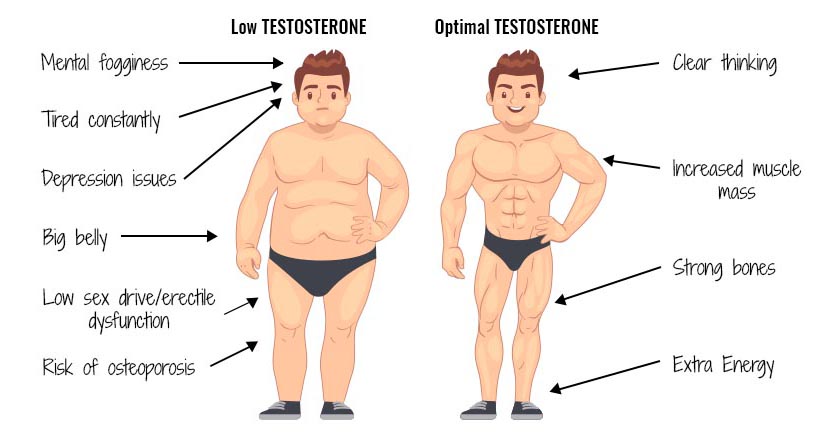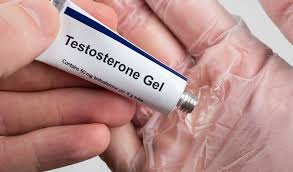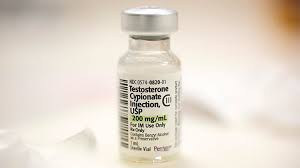Symptoms of Low Testosterone
Each year, millions of men suffer from low testosterone and the various side effects that come along with it. If you are hoping to identify low testosterone that you are experiencing or address the side effects of low testosterone, then it is essential to know what the symptoms of low testosterone are and what you should be looking for when trying to diagnose low testosterone. While there are times that low testosterone is a result of aging, there are other times that knowing the symptoms can help you to treat a preventable low testosterone condition.
The reason that it is so important to know and look out for the symptoms of low testosterone is that testosterone plays such a large role in male health and the everyday body functions that we experience. It also has a crucial role in the appearance of men and sexual development and maturation in men. It can stimulate your sperm production and maintain a healthy sex drive. For those that workout and care about muscle mass, testosterone is also important for maintaining muscle mass and bone strength.
Naturally, you will see testosterone production decrease with age. This typically begins around the age of 60, but there are also risk factors and contributors to the early reduction in testosterone. There is a range of symptoms that are associated with low testosterone, and knowing more information about these symptoms can help you to identify low testosterone early, while it can still be treated. With this information in hand, you’ll know how to identify low testosterone.
12 Symptoms of Low Testosterone
Here are the 12 symptoms that you should be watching for if you want to keep an eye on your testosterone levels.
Low Sex Drive
Testosterone plays a large role in libido, which is another word for sex drive. With low testosterone, you may be feeling a low desire for sex. As you can imagine, this can serve as quite an inconvenience for men that is easy to notice. It’s important to note that men will probably naturally experience a decreased sex drive as they age, but those with low testosterone will likely experience a very dramatic drop in their sex drive, making it easier to identify and recognize as being a cause of low testosterone.
Inability to Achieve/Maintain Erection
As we touched on earlier, testosterone is critically important to a man’s sex drive. However, what some people don’t know is that it is also important in giving a man the ability to have sex. That means that testosterone is very crucial in the process of both achieving and maintaining an erection. The way that testosterone does this is by stimulating receptors in the brain, which produce nitric oxide and signal to the penis to achieve an erection.
Since testosterone plays a role in the brain signals essential for stimulation, men who have low testosterone will likely have difficulty achieving and maintaining an erection both prior to sex or of the spontaneous nature. It’s also important to note that testosterone is really only one factor in the process of achieving an erection. There is some research to suggest that testosterone replacement is somewhat effective in treating this problem.
There are other health conditions and afflictions that can affect a man’s ability to achieve and maintain an erection, such as diabetes, thyroid problems, high blood pressure, high cholesterol, smoking, alcohol use, depression, stress, and anxiety.
Low Semen Production
Testosterone is a crucial element in the production of semen. With low testosterone, the production fo semen is sure to be heavily affected. Men with low testosterone may see a decreased ability for producing semen or lower sperm counts during ejaculation.
Hair Loss
Testosterone is not only important for bodily functions related to sex, but also for regular body functions in men. One of these functions is hair production. While balding is natural for men as they age, premature balding could be a huge signal for low testosterone. Along with natural aging, another factor in balding could be inherited. Those with low testosterone will experience more severe and quick hair loss, compared to natural, gradual methods. This also applies to the body and facial hair, as well.
Fatigue
Many of us lead busy lives, but what many don’t know is that true fatigue could be a clear sign of low testosterone. Fatigue refers to the condition in which a man or person is tired. This often occurs despite having adequate rest and sleep. Fatigue is one of the most common signs of low testosterone in men. You might also identify fatigue from the lack of motivation to get exercise in your everyday life.
Muscle Mass Loss
Testosterone is one of the most important factors in helping the male body produce muscles and maintain muscle mass. That is why muscle mass loss is one of the primary symptoms in men that are experiencing muscle mass loss. It’s important to note that while low testosterone may lead to decreased muscle mass, it doesn’t necessarily lead to decreased strength or function of the muscle.
Increased Body Fat
Due to the lack of motivation to work out and the imbalance that low testosterone causes, low testosterone is often the main factor in increased body fat. Those that are suffering from low testosterone often experience increased body fat, and at times even develop something called gynecomastia. This is a condition in which the breast tissue is enlarged, and it is thought to be caused by an imbalance between the amount of testosterone and estrogen in the bodies of men that are experiencing low testosterone.
Decreased Bone Mass
Another area in which testosterone is very important in the human body is in the development of bones. To have strong bones, you need to have the right balance of testosterone in your body. Otherwise, you could develop lower bone mass and as a result, weaker bone structure. Osteoporosis is a condition that could develop with lowered testosterone, and while it is more common within women, it does occur in men as well. Having proper levels of testosterone help to produce and build strong bones.
Mood Swings
Testosterone is one of the most important hormones in a man’s body, and it helps to regulate everything from physical fitness to the mood that you are in. If you are experiencing low testosterone, it may interfere with your moods. Mental capacity and mood are heavily influenced by the level of testosterone in your body and low testosterone could lead to conditions such as depression, lack of focus, and irritability.
Memory Loss
Testosterone has a heavy impact on brain functionality and what we are able to achieve with our brains. One of the areas that are most heavily affected in our brain from having low testosterone is our memory. Memory is very important, as we use them to perform everyday tasks and achieve things that we need to achieve. Lower testosterone levels have often been linked with negatively affected memory. In addition, testosterone supplementation has also been linked to improved memory. It is clear that an imbalance with our testosterone has a severe impact on our production and daily function.
Testicle Size
One of the clearest ways to diagnose low testosterone is by testicle size. When testosterone levels are lower in the body, that can contribute to smaller testicles. Testicles are produced because of high testosterone levels in the body, so when those levels are decreased, it is natural for testicle size to decrease. In addition to a smaller testicle size, lower testosterone can also contribute to smaller penis size. There are other causes of smaller testicles, so smaller testicles cannot always necessarily be attributed to low testosterone.
Low Blood Count
There have been many studies to suggest that low testosterone can affect areas of health that have nothing to do with sex life or libido. One of those areas is blood counts. There have been links from men with low testosterone to the condition of anemia. The symptoms of anemia include problems focusing, dizziness, cramping, and abnormal heart rate. This is a condition that should be addressed as soon as possible because it can have far-reaching implications on your health.
Treatment for Low Testosterone
While there are many men that experience low testosterone as a result of age, there are other men who are young and experiencing low testosterone. For these individuals, there are certainly treatment options that can be used to help raise the level of testosterone in the body and fend off some of the symptoms that come along with low testosterone. Testosterone is obviously the most important hormone in the body of men, so it is important that low testosterone is addressed as soon as possible, and many men can sympathize with wanting to address their low testosterone as soon as possible. Here are some of the possible treatments that may be used if you have low testosterone or are experiencing the symptoms that go along with low testosterone.
Skin Patch
This is a patch that is applied to the skin of the individual that is seeking treatment. This patch should be applied every 24 hours as directed by your medical professional. The purpose of this patch is to deliver small amounts of testosterone into the skin periodically to raise the level of testosterone in the body.
Testosterone Gels
Gels are another topical option for those who are looking for something to apply testosterone to the skin. These gels are typically spread on to the skin daily and help to increase the amount of testosterone in your body. When using a gel, it is important to cover the applied area with clothing so that you don’t also apply the testosterone to any people that you come into contact with.
Oral Therapy
If you are looking for a faster and easier way to increase the amount of testosterone in your body, capsules are a great way to do so. Capsules are traditionally swallowed or taken once or twice a day. This is a great way to get testosterone directly into the bloodstream, making it faster and easier to increase your testosterone levels.
Pellets
Pellets are more advanced delivery methods for those looking to increase testosterone. Pellets are usually placed with a device under the skin. The most common application areas of these devices are around the hips or rear end. They are designed to slowly release testosterone over time to give your body a gradual dose of the very important hormone. These pellets typically need to be replaced every 3 to 6 months so that they can continue to work.
Injections
testosterone Injections are another very effective way to add more testosterone into your body. Injections go right into the bloodstream and are typically used every 7 to 14 days for the best results. Testosterone levels are very high immediately following the injection and gradually come back down, which can contribute to a more volatile mood and level of testosterone in your body, but these negative side effects can be mitigated by doing smaller, more frequent doses.
How Fast Can Treatments Work?
If you are experiencing low testosterone and exploring the various methods that can be used to help increase the amount of testosterone in your body, one of the largest questions that you probably have is how fast you can expect these treatments to work. The answer is not so straightforward. The speed of the method that you are using often depends on the delivery method and how testosterone is being introduced into your body. With injections and other methods that put the testosterone directly into your bloodstream, the effects will be felt much faster than, for example, a patch that permeates the testosterone slowly into your body for a more measured and cautious effect. Most men are able to feel the effects of increased testosterone somewhere between 4 and 6 weeks after using their selected method of testosterone replacement therapy. Larger scale changes in the body as a result of testosterone therapy such as muscle mass can take months to take effect.
Causes of Low Testosterone
In order to understand low testosterone better and how it is treated, you first need to understand the various causes that can contribute to lower testosterone in men. Here are some of the causes of low testosterone and the explanation behind them.
Natural Aging
The lowering of testosterone in the male body is natural and usually occurs in those aged 45 or older. As you get older, the amount of testosterone present in your body will naturally decrease. The side effects of this type of testosterone reduction shouldn’t be too severe, as it is a gradual change that takes place over time, instead of an abrupt and sudden change.
Injury
Injuries are one thing that can certainly cause low testosterone. If you have had a severe accident or other affliction that affects areas of the body responsible for testosterone production, you can suffer from low testosterone and its side effects as a result of an injury. Alternatively, an injury can negatively impact you from a mental standpoint and prevent your body from producing proper testosterone.
Chemotherapy/Cancer
Chemotherapy and cancer are extremely difficult medical procedures and illnesses to go through, and they can most certainly impact your testosterone levels. The way that this would happen is by the illness of the treatment severely damaging parts of your body that are responsible for the production of your testosterone or other hormones in your body. With just a little bit of this, the chemical balance of your body can be thrown off easily, giving you the symptoms of low testosterone.
Medications
Taking medication can be very stressful for the body, as well as whatever is responsible for the taking of medication in the first place. Regardless of whether it is the illness that you are experiencing the taking of the medication, illnesses and the medication can have a long list of side effects. One of those is often lowered testosterone and imbalance of hormones. You should consult with your physician if you are taking a medication that is affecting your testosterone to inquire about a medication that is less damaging to your testosterone levels.
Alcohol Abuse
Alcohol takes a toll on the body and it has been found that many people who have abused alcohol either recently or in the past experience symptoms of lowered testosterone. Alcohol can be very damaging to the hormones in your body and the various glands that are responsible for regulating those hormones. If you have abused alcohol either recently or in the past, low testosterone is definitely a potential side effect of those actions.
Obesity
Much of your testosterone production rests upon physical fitness, and that is why obesity is one of the most common reasons for low testosterone. Often times, men can actually raise their testosterone levels simply by working out and leading a healthier lifestyle filled with healthier foods and more exercise. If you want a natural way to raise your testosterone and are overweight or obese, then natural weight loss is a great place to start.
Extreme Weight Loss
When your body is thrust into a position that it’s not familiar with, it is not uncommon for you to experience an imbalance of hormones, including testosterone. If you have recently gone through a dramatic physical transformation, it is very possible that you are experiencing low testosterone. In this case, it is imperative that you lose weight in a healthy way and wait for levels to return to normal, or consult your physician.
Sleep Apnea
Sleep apnea can affect your testosterone production in a few different ways, as it is disruptive to your sleep and also indicative of a physical disorder. With sleep apnea, your body is not getting the rest that it needs to get and that could certainly affect your testosterone levels and level of bodily rest. If you have sleep apnea and believe that it is causing your low testosterone, you should absolutely consult your doctor to see what you can do about solving your sleep apnea problems.
Stress
Stress is one of the most common reasons for lowered testosterone. Those who are under more stress than others will frequently display lowered testosterone because of mental factors and find it harder to gain motivation for sexual activity and other tasks. Allowing yourself a way to relieve stress is a very effective way to naturally help your testosterone levels and overcome the symptoms that you are experiencing.
How Common is Low Testosterone?
Low testosterone is a natural occurrence that affects about 40% of men who are aged 45 and older. There is not a set standard when it comes to testosterone levels, but low testosterone is defined as having less than what is usual for the individual. Low testosterone levels vary throughout the day and have various factors that go into determining what the testosterone level for any given person is.
Conclusion
Low testosterone is one of the most common things that men across the world deal with on a daily basis, and that is why it is so important to be familiar with the symptoms of low testosterone. There are a variety of symptoms that are associated with low testosterone, and as a result, it is sometimes difficult to diagnose low testosterone. However, if you know intimately the various signs of low testosterone, then you will more easily be able to diagnose it when you recognize it and reap the benefits of identifying it early.
In addition to all of the various symptoms of low testosterone, there are also dozens of potential causes and solutions to this problem. Low testosterone is an issue that is not only widespread but very complex and without a defined path towards a solution. That is because the causes vary according to the individual and their unique situation.
Now that you have a deeper understanding of low testosterone and the factors that surround it, you’ll be more able to identify it and diagnose it if it were to arise. In addition, you now know about many of the treatment options and other options you have upon diagnosis.



